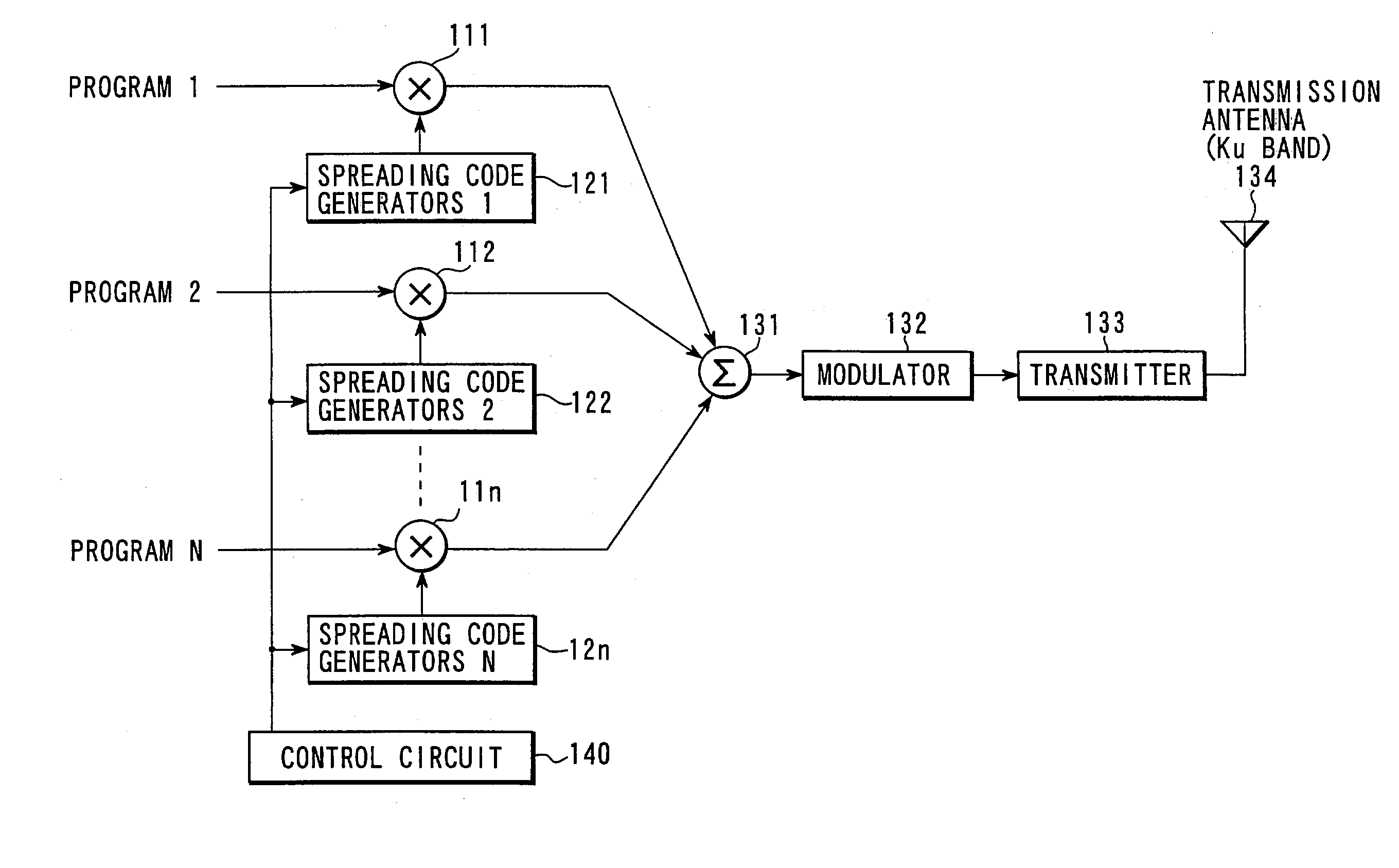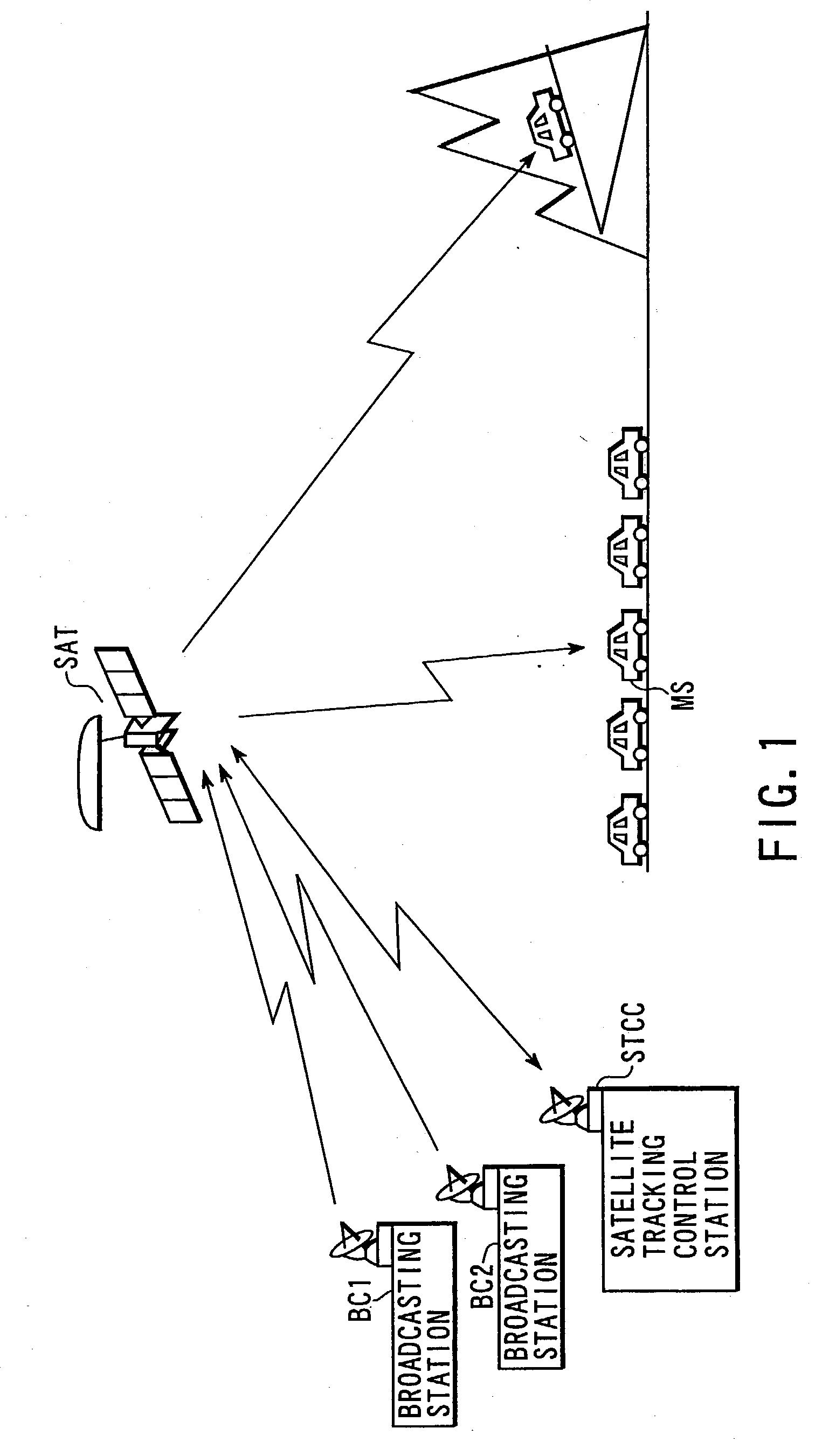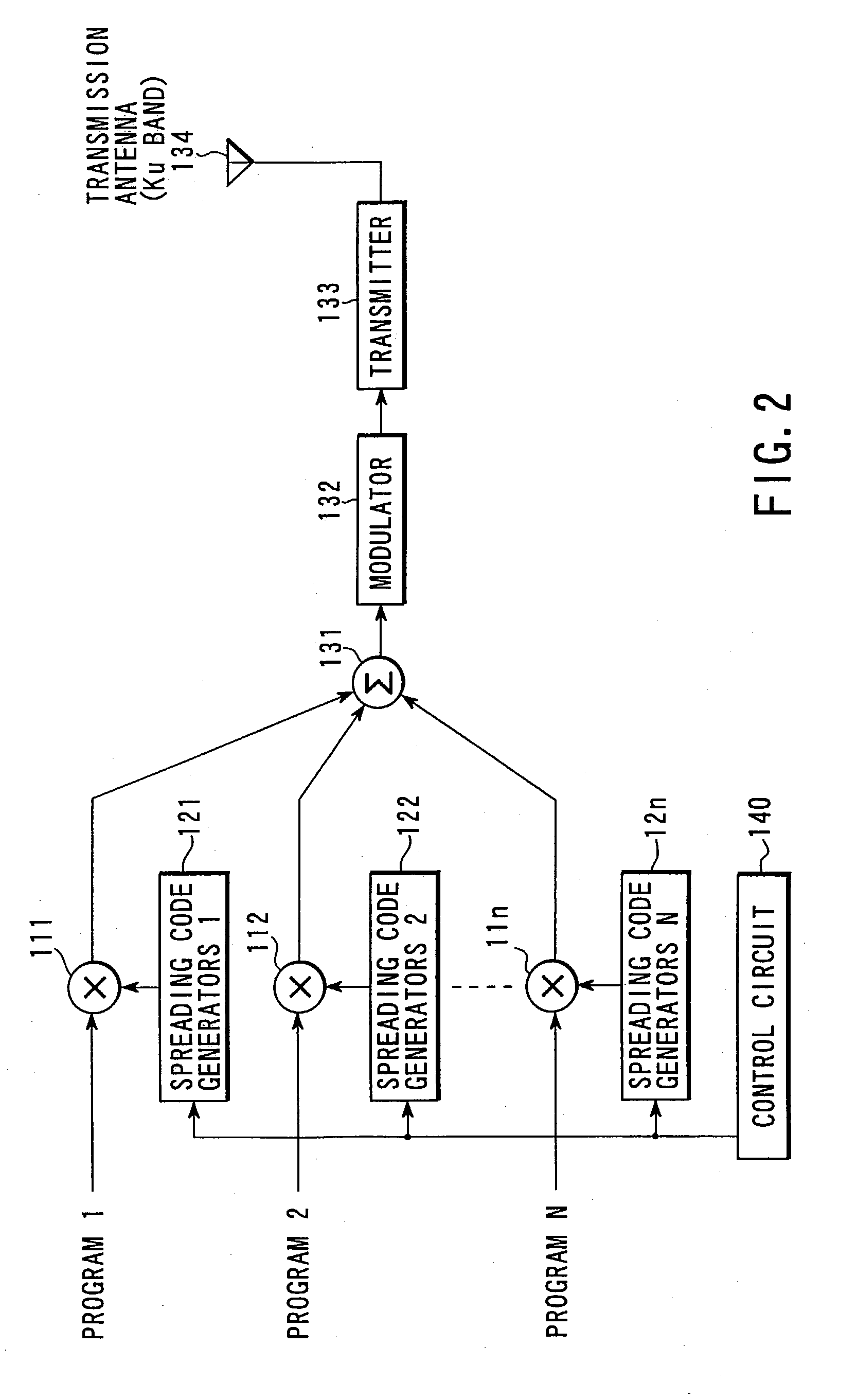Satellite broadcasting system
a satellite broadcasting and satellite technology, applied in the field of satellite broadcasting systems, can solve the problems of low degree of channel multiplex per frequency, inability to meet the requirement for more channels, and difficulty in solving multiplex schemas
- Summary
- Abstract
- Description
- Claims
- Application Information
AI Technical Summary
Benefits of technology
Problems solved by technology
Method used
Image
Examples
first embodiment
[0115] (First Embodiment)
[0116] FIG. 1 is a schematic view showing a satellite broadcasting system according to the first embodiment of the present invention.
[0117] This satellite broadcasting system includes a plurality of ground broadcasting stations (VSAT) BC1 and BC2 or feeder link stations, a geostationary satellite SAT, and a satellite tracking control station STCC.
[0118] Each of the ground broadcasting stations (VSAT) BC1 and BC2 or the feeder link stations transmits program information prepared and edited by a broadcaster to the geostationary satellite SAT through an uplink transmission channel in the Ka band (26.5 to 40 GHz) or the Ku band (12.5 to 18 GHz).
[0119] The geostationary satellite SAT has a Ka-band or Ku-band antenna having a diameter of 2.5-m class and an S-band (e.g., 2.6 GHz) antenna having a diameter of 15-m class. A broadcasting signal multiplexed and transmitted from one of the broadcasting stations (VSAT) BC1 and BC2 or the feeder link stations is received ...
second embodiment
[0127] (Second Embodiment)
[0128] In the second embodiment of the present invention, a geostationary satellite SAT detects the spreading code phase difference between the channels of a CDM broadcasting signal arriving from each of a ground broadcasting station BC1 or BC2, matches the spreading code phases between the channels on the basis of the detection result, and then transmits a signal to a broadcasting receiver MS.
[0129] FIG. 3 is a block diagram showing the arrangement of the geostationary satellite SAT according to the second embodiment. Referring to FIG. 3 a CDM broadcasting signal transmitted from the ground broadcasting station BC1 or BC2 is received by a Ku-band reception antenna 151 and input to a reception circuit 152. The CDM broadcasting signal is low-noise-amplified, down-converted into an IF signal, and distributed to k correlators 161 to 16k. The number of correlators 161 to 16k is set in correspondence with a total number k of channels to be multiplexed / transmitte...
third embodiment
[0135] (Third Embodiment)
[0136] In the third embodiment of the present invention, a ground broadcasting station BC1 or BC2 detects the spreading code phase difference between channels in generating a CDM broadcasting signal and transmitting the CDM broadcasting signal, and the phase difference information is multiplexed to the CDM broadcasting signal and transmitted. In selectively receiving one of the channels of the CDM broadcasting signal arriving through a geostationary satellite SAT, a broadcasting receiver MS initializes the chip phase of the spreading code on the basis of the phase difference information received together with the CDM broadcasting signal, and selectively despreads the spectrum of the broadcasting signal of each channel using the spreading code to reconstruct the broadcasting signal.
[0137] FIG. 4 is a block diagram showing the arrangement of the transmission section of each of the ground broadcasting stations BC1 and BC2 according to this embodiment. The same ...
PUM
 Login to View More
Login to View More Abstract
Description
Claims
Application Information
 Login to View More
Login to View More - R&D
- Intellectual Property
- Life Sciences
- Materials
- Tech Scout
- Unparalleled Data Quality
- Higher Quality Content
- 60% Fewer Hallucinations
Browse by: Latest US Patents, China's latest patents, Technical Efficacy Thesaurus, Application Domain, Technology Topic, Popular Technical Reports.
© 2025 PatSnap. All rights reserved.Legal|Privacy policy|Modern Slavery Act Transparency Statement|Sitemap|About US| Contact US: help@patsnap.com



